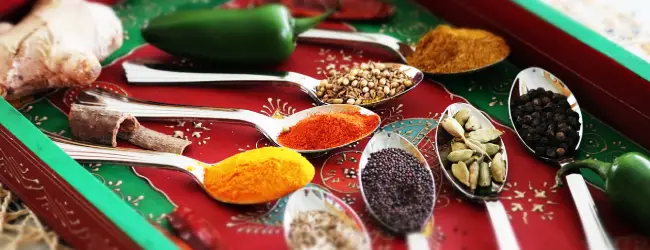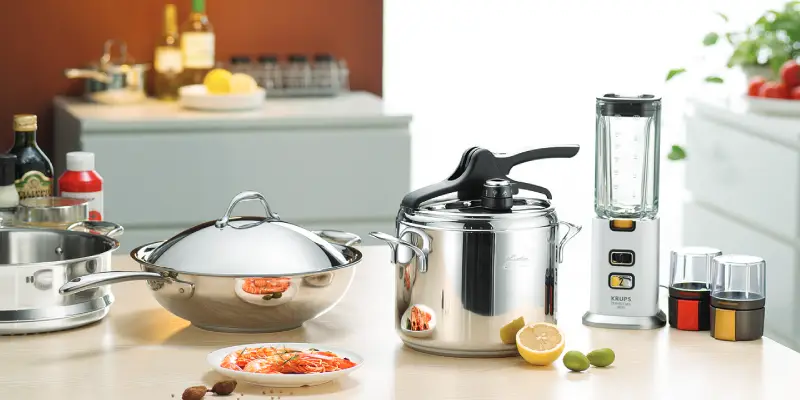Today, I’m going to talk about an organizing method. I think that the 3-category organization method that I am using might change our lives more easily.
Organizing to change
These days, I am fascinated by organizing my pantry and kitchen. After I organized my messy pantry several days ago, I felt more free in my life. That gave me an allowable margin to change.
As I mentioned in an earlier post, I think that simplifying and complicating are both important to change our lives. Simplifying gives us an easier life. And complicating things allows us to learn new things through trial and error. So we can say that we can change our lives by riding both waves alternately. (See the image below.)
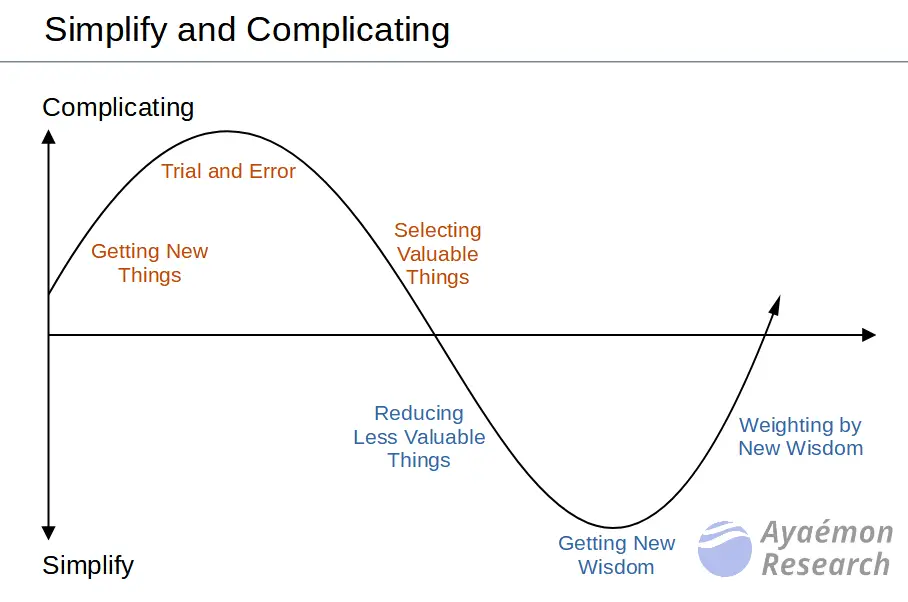
In other words, we can have an allowable margin by simplifying. Then we can do new trial and error by complicating. These two waves give us changes.
And organizing makes simplifying easier. I believe that organizing is necessary for change, even if it produces nothing new.

The 3-Category Organization Method
And I recently created a new organizing method for myself. Now, I’ll introduce it. I call this method the 3-Category Organization Method. If we use this method, we might simplify our lives more easily.
In this method, we’ll categorize our belongings into 3 groups: Basic tools, Consumings, and Stocks. We’ll manage them to achieve each goal. (Shown below.)
- Basic tools are the tools we usually use. (E.g., knives, plates, pans, or pots in the kitchen.) We organize this to profit or create new value.
- Consumings are the things we are currently consuming or using. (E.g., milk, eggs, vegetables, or tools seldom used in the kitchen.) This has both characteristics of (1) and (3).
- Stocks are consumable items that can be kept for the long term. (E.g., wheat, rice, or canned foods in the kitchen.) We organize this to avoid losses or disgusting events.
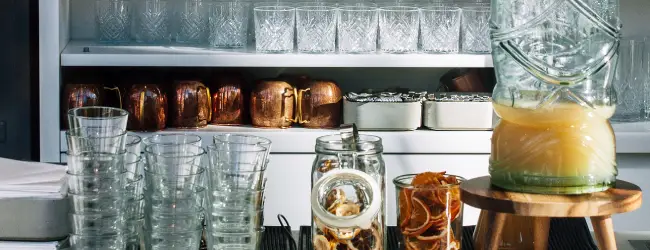
I’ll use kitchen examples. But I believe that this can be applied to many of our creative works.
So, let’s see the tactics for each one below. First, we’ll see (1) and (3). Because (1) Basic tools and (3) Stocks have opposite relationships. (2) Consumings are located in the middle of them.
(1) Basic Tools: the things to create profits
(1) Basic Tools are the tools that we use frequently. For kitchen examples, knives, forks, plates, pans, or pots.
We organize this to profit or create new value. Because we create our products with these tools. If we simplify the basic tools, we can do more trial and error in creative ways. That allows us to create new values.
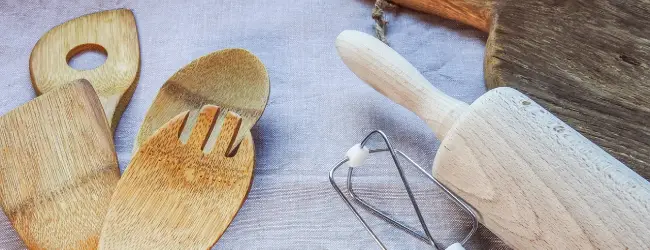
The main tactic in this category is to simplify and integrate them as well as possible. In other words, get integrated and use them in various situations.
After we simplified them, sometimes we can use more money than we thought in this category. Because the things in this category are basic tools in the long term. If we use them for a long time, the amount of the first investment becomes relatively small. And if they are of high quality, they bring us a lot of value.
The fewer, the easier to master
And if we simplify them, we can use them more efficiently. Because the fewer things, the easier it is to master them. The more we simplify, the harder it is to break, and the easier it is to replace if it is gone. In addition, simple tools tend to be more affordable. For example, there is not such a big functional difference between affordable stainless steel forks and name-brand forks.
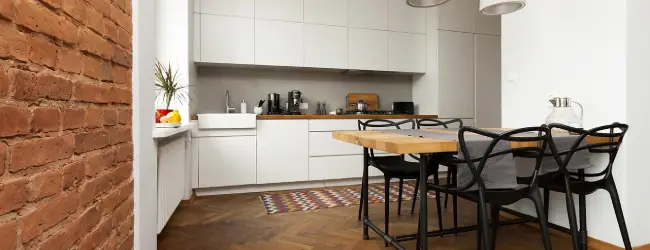
If we simplify enough, we will have a few multipurpose, versatile, simple, and good tools. In other words, we get new skills. Then we do more trial and error with new ways.
Of course, while we are doing trial and error, we don’t need to pay a lot for these new things. We can start with inexpensive tools. And after we find what is valuable and effective, we can buy more good things.
(3) Stocks: the things to reduce losses
(3) Stocks, on the other hand, are consumable items that can be kept long-term. We use these things to prevent losses, not to make profits. In other words, we store things to avoid disgusting events for us.
We consume a lot of things every day. And sometimes we have critical difficulties if we lose them. We keep them for this purpose.

By the way, we eliminate tools from this category. Only consumable items belong to this category. Because our basic tools belong to (1). We need to simplify tools as much as possible. The tools we seldom use are less necessary to store. We can rent or use alternate tools.
So in this category, we need long-term storage management. Because this is something consumed at the end, we need to plan the storage area, storage term, and price. Perhaps the larger the amount, the cheaper it is, but it could go bad before use. So we need planning.
If we simplify this category enough, we can do more trial and error to eliminate anxieties.
(2)Consumings: the things currently using
(2) Consumings are located in the middle of (1) Basic Tools and (3) Stocks. This has both elements of (1) and (3). We need to select good things, but we also need to store and manage them.
So in this category, we need short-term storage management. For example, when we buy ketchup, we need to plan the quality amount and storage spaces. This is both (1) and (3).

What to change in our lives
If we want to change our current situation, there are two different ways: by simplifying and by complicating. We simplify things to make the allowable margin. It allows us to do trial and error.
During the simplifying phase, we can plan by categorizing things into these 3 groups. Then we can find out where to simplify according to our wishes.
Conclusion
So I think that the 3-category organization method that I am using might change our lives more easily.
If we want new profit or value, simplify (1) Basic Tools. On the contrary, if we want more security, simplify (3) Stocks.
This categorization method might give us the wisdom to simplify our lives.
Thank you for reading. See you in the next article.
